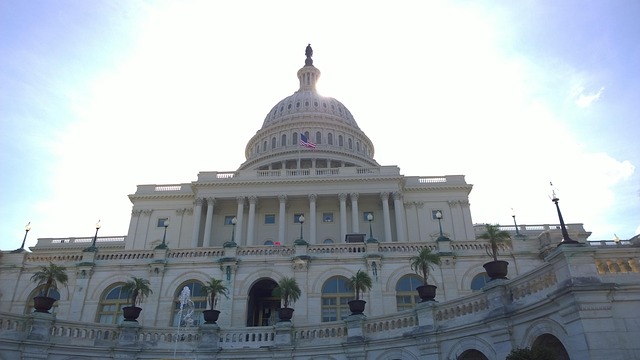$150+ Billion Military Quality of Life and National Defense Funding Signed Into Law

H.R. 1, the federal budget signed into law by the President on July 4, 2025, includes more than $150 billion in funding for the Department of Defense, intended to modernize the armed forces and enhance national security. It also adds some $9 billion in military quality of life programs.
What’s in H.R. 1? The bill contains a great deal of information unrelated to military spending. What follows are highlights of the military-specific portions of the federal budget bill.
>> Never miss a benefits update. Subscribe to the MyMilitaryBenefits Newsletter today.
Enhancing Military Quality of Life
One major component of the legislation is the allocation of approximately $9 billion to improve the quality of life for military personnel and their families. This funding directly addresses long-standing challenges in military life.
However, Military.com notes that this comes even as the federal budget slashes its funding for Supplemental Nutrition Assistance Program (SNAP) sometimes known as “food stamps”. The cut in federal SNAP funds may force states to make up the difference or potentially reduce the size of their programs.
While some try to politicize so-called “handouts” or “entitlement” programs, more than one million veteran families rely on SNAP, which, as the Military.com article reminds, is one of the largest nutrition programs in the United States.
H.R. 1 “makes it harder to qualify for SNAP benefits by restoring work requirements for veterans and reducing benefit amounts. The bill also shifts some of the cost for the program from the federal government, which has paid for the benefit, to the states, which will strain state budgets and force them to make cuts to the program, according to the Military.com article.
H.R. 1 Budget Allocations for Military Pay and Quality of Life
House Resolution 1, signed into law by the President of the United States on July 4, 2025, includes federal funds allocated toward military housing, healthcare, childcare, and education assistance for military families. It also increases special military pay and allowances.
-
- $2.9 billion for the Basic Allowance for Housing
- $62 million for Child Development Center staffing
- $50 million for bonuses, special pay, and incentive pay
- $100 million for tuition assistance across all branches
- $100 million for child care fee assistance.
- $1 billion for barracks restoration.
- $350 million specifically for the Marine Corps’ housing improvement initiative, Barracks 2030.
- Approval for barracks privatization, a controversial idea that has been implemented with mixed results in military family housing.
- $590 million for PCS moves
>>Never miss a benefits update. Subscribe to the MyMilitaryBenefits Newsletter today.
Other Military Funding in House Resolution 1
Strengthening the U.S. Navy and Shipbuilding
H.R. 1 adds $29 billion, intended to revitalize the nation’s naval fleet and the maritime industrial base. The funding is for the construction of new warships, including two Arleigh Burke-class Guided Missile Destroyers and a second Virginia-class submarine.
A portion of the funding is also set aside for investments in the submarine industrial base, focusing on supplier and workforce development to maintain the U.S. undersea advantage. Furthermore, the legislation invests in autonomous surface and subsurface naval technology.
So-Called “Golden Dome” Missile Defense Initiative
The legislation provides $25 billion for the so-called”Golden Dome” initiative, which some hope will create a layered missile defense shield for the United States. This funding supports the development and procurement of systems designed to defend against a wide range of aerial threats, including hypersonic weapons.
Munitions and the Industrial Base
$25 billion is allocated to munitions and defense supply chains to boost production rates of weapons and replenish U.S. stockpiles. It includes funding for conventional and hypersonic munitions to procure nearly 2,000 additional weapons. The bill also provides over $1.3 billion for broader industrial base supply chain improvements and $2.5 billion specifically for expanding missile and munitions production facilities.
Nuclear Deterrence and Strategic Readiness
The legislation includes $15 billion for the modernization of the U.S. nuclear triad. These funds are intended to accelerate programs such as the Sentinel Intercontinental Ballistic Missile (ICBM) and the B-21 Raider bomber. The funding also supports infrastructure improvements to maintain the nation’s ability to manufacture nuclear components.
Deterrence in the Indo-Pacific
The federal budget includes $12 billion for the U.S. Indo-Pacific Command. This funding is designated to expand military exercises with allies and partners, improve the readiness of U.S. forces in the region, and procure capabilities and build infrastructure needed to conduct military operations in the Western Pacific.
>> Never miss a benefits update. Subscribe to the MyMilitaryBenefits Newsletter today.
About the author
Editor-in-Chief Joe Wallace is a 13-year veteran of the United States Air Force and a former reporter/editor for Air Force Television News and the Pentagon Channel. His freelance work includes contract work for Motorola, VALoans.com, and Credit Karma. He is co-founder of Dim Art House in Springfield, Illinois, and spends his non-writing time as an abstract painter, independent publisher, and occasional filmmaker.


